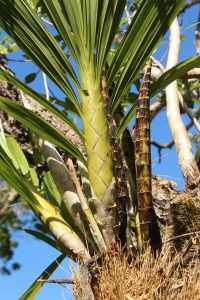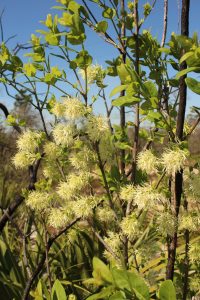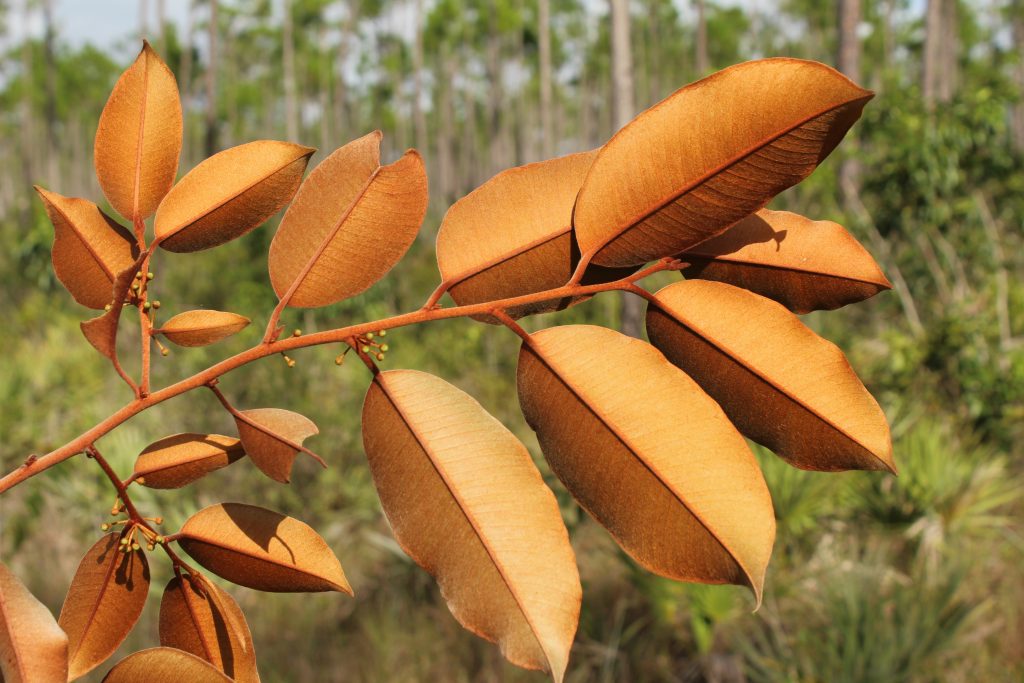Satinleaf (Chrysophyllum oliviforme), a tree native to Florida, the Bahamas, the Greater Antilles, and Belize. Photo by Scott Ward.
What do a cigar orchid, giant air plant, Everglades palm, and pygmy fringetree have in common? They’re all plants that, in the United States, only grow Florida. And they’re covered in the latest version of the Flora of the Southeastern United States, published by our Herbarium!

What exactly is a Flora?
The UNC-Chapel Hill Herbarium, part of the North Carolina Botanical Garden, holds over 800,000 plant specimens and serves as a leading resource for the taxonomy and identification of plants across the southeastern United States. This includes the publishing of floras — documents that describe all the plant species of a particular area, including their habitats, appearance, and other distinguishing characteristics.
Alan Weakley, director of the Herbarium, first created a working draft of the Flora of the Carolinas, Virginia, and Georgia in 2005, drawing on decades of field experience with plants across the Southeast. At that point, the most recent inclusive field manual of the flora of the Carolinas dated back to 1968 and lacked many newly-discovered species and taxonomic relationships.
In 2020, Weakley and our Herbarium staff published another working draft (as a free, downloadable PDF!) of the Flora of the Southeastern United States, expanding on Weakley’s original 5,600 taxa from three states to over 10,000 native and non-native plants across 23 states, from Pennsylvania to Texas.
Growing our team
Our Herbarium staff aren’t content to stop there, resting on their proverbial (or literal) laurels: we’re excited to announce that our team has grown with the addition of research botanist Scott Ward and database manager Michael Lee. Scott comes to us from Archbold Biological Station in south-central Florida, where he worked on a variety of botanical, community, and demography projects. Michael Lee comes to us from NatureServe, continuing on years of experience developing the growing database and software application of the Flora of the Southeastern United States. They join the Herbarium’s core team of Alan Weakley, Carol Ann McCormick, Derick Poindexter, Shanna Oberreiter; new contractors Chris Ludwig and Katie Gibson; and numerous grad students, undergraduates, and Herbarium associates.

In the coming years, this team will be deepening and improving the Flora of the Southeastern U.S., using a custom database to create apps with graphic and traditional keys, websites, area-specific subfloras, and more. Together, these products will cover the unglaciated Southeast and serve as the foundation for conservation, biodiversity inventories, citizen science, and education and outreach to new generations of botanists.
Now, when you visit our Flora download page, you can download the flora of a specific state or region, like Florida, which supports over 200 endemic species and plants more often found in the Caribbean. This means many species of orchids, palms, bromeliads, and scrub plants restricted to Florida and southward now fall within the Flora, expanding its application for scientists across the country.
